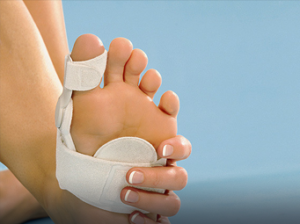“Since the operation my foot has been great. It’s lovely to walk and not feel that I have a stone in my shoe”
In-Growing Toe Nails
Treatments
 |
Ingrowing Toenails |
 |
Bunions |
 |
Arthritis |
 |
Nerve Pathology |
 |
Verrucae, Corn & Skin Lesions |
 |
Heel Pain |
 |
Flat Feet |
 |
Toe Deformities |
 |
Lumps and Bumps |
In-Growing Toe Nails
This is a common problem where the side of the nail cuts into the skin next to the nail and consequently can become painful. When a splinter of nail pierces the skin of the toe, it allows the germs that are normally harmlessly present on the skin to get underneath the skin and cause infection, as such the skin next to the nail may also become infected or inflamed.
In most cases it is usually the big toe which become affected, although it can occur with other toes. It is a common problem, especially in teenagers and young adults.
Causes
Ingrowing toenails can occur because of a variety of issues.
- Not trimming your nails correctly,
- Wearing poorly-fitting shoes or tight socks.
- Sweating through exercise. Active people may be more prone to ingrowing toenails as they tend to sweat more through exercise
- Shoes which force the toes towards each other encourage the nail to grow into the skin. Tight shoes, high heels and pointed-toe shoes can cause problems.
Ingrowing toenails can also occur more often in people who have nail deformities. Often however there is no defined reason for the occurance, such is it’s commonality.
Other possible causes are injury to the nail, a fungal infection of the nail, or possibly, certain medications.
Treatment
Left untreated, an ingrown toenail can become infected, so it’s important that you:
- Keep your feet clean by washing them regularly with soap and water
- Check your footwear and ensure you are not putting excessive strain on your toes
- Cut your toenails straight across to stop them
- Wear comfortable shoes that fit properly
If your toenail is still causing pain, it is best to contact our clinic. Surgery is not always required but
depending on the severity of your symptoms, left untreated symptoms may require the partial removal of the toe nail.
Standard Treatments
Partial nail avulsion
Partial nail avulsion removes part of your toenail and is the most commonly used operation for treating ingrown toenails. It’s an effective and easy treatment. A simple anaesthetic is used to numb your toe and the edges of your toenail are cut away. We then treat the affected area to prevent the nail growing back and becoming ingrown in the future. A course of antibiotics may be prescribed if your nail is infected and any infection drained.
Total nail avulsion
Nail avulsion completely removes your toenail. This is only necessary if your nail is very thick and is pressing into the surrounding toe. If the toenail has been removed, you’ll have an indentation where your nail use to be, however it is safe to be without a toenail.
Post Surgery
After toenail surgery, your toe will be in a bandage to prevent further infection.
It’s important for you to rest your foot and keep it raised for one to two days after the operation.
We would recommend specific pain-killers if required and suggest open toe footwear be worn as not to agitate the toe.


